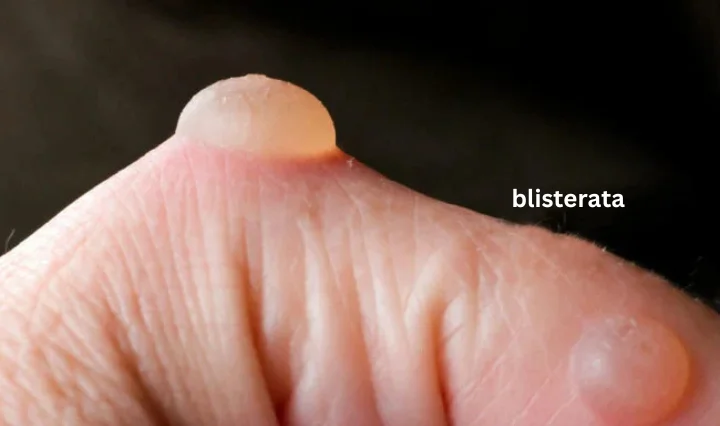In the realm of medical history, there exists a fascinating yet often overlooked practice known as “Blisterata.” Derived from the Latin word “blister,” this ancient therapeutic method involves intentionally inducing blisters on the skin as a means of treating various ailments. While it may sound unconventional by today’s medical standards, Blisterata has a rich historical background and continues to intrigue scholars and practitioners alike.
The Origins and Evolution of Blisterata
Blisterata dates back to ancient civilizations where healers and physicians believed in the concept of “counter-irritation” – the idea that inducing irritation or inflammation in one part of the body could alleviate symptoms elsewhere. The ancient Greeks, Egyptians, and Chinese all practiced forms of blistering for therapeutic purposes, viewing it as a way to rebalance the body’s humors or vital energies.
In the Greco-Roman world, renowned physicians like Galen advocated for blistering to treat conditions ranging from headaches and arthritis to mental disorders. They used techniques such as applying heated cups or herbal plasters to create blisters strategically on the body, based on their understanding of anatomy and disease.
Methods and Applications
The methods employed in Blisterata varied widely across cultures and time periods. Some techniques involved:
- Cantharidin Blistering: Derived from the Spanish fly beetle, cantharidin was used to create blisters with a substance that induced a controlled burn, believed to draw out toxins and promote healing.
- Herbal Plasters: Mixtures of herbs and resins were applied to the skin and heated to induce blistering. These plasters were often tailored to the specific condition being treated.
- Cupping: A technique originating from traditional Chinese medicine, cupping involves creating a vacuum inside glass or bamboo cups placed on the skin, drawing blood to the surface and sometimes inducing blisters.
- Needle Blistering: Fine needles were used to puncture the skin in a controlled manner, stimulating an inflammatory response and promoting circulation.
Modern Perspectives and Revival
In modern times, Blisterata has largely fallen out of favor in mainstream medicine due to advances in pharmacology and a better understanding of disease mechanisms. However, there has been a resurgence of interest in traditional healing practices, including Blisterata, driven by proponents of integrative medicine and historical research.
Advocates argue that Blisterata could have therapeutic benefits beyond what conventional medicine offers, particularly in chronic pain management and certain inflammatory conditions. Research into the mechanisms of how controlled blistering affects the immune system and nerve responses continues to shed light on its potential applications.
Challenges and Controversies
Despite its potential benefits, Blisterata faces significant challenges and controversies. Critics point to the lack of rigorous scientific evidence supporting its efficacy compared to modern medical treatments. There are also concerns about the potential for infection, scarring, and patient discomfort associated with blistering procedures.
Furthermore, the cultural and ethical considerations surrounding the use of substances like cantharidin, which can be toxic if not used properly, pose additional hurdles to widespread adoption.
Conclusion
Blisterata remains a captivating chapter in the history of medicine, offering insights into the evolution of therapeutic practices and our understanding of the human body. While its use in modern healthcare is limited, the revival of interest in traditional healing methods prompts ongoing research and debate about the role of Blisterata in contemporary medicine.
Whether viewed as an ancient curiosity or a potential source of therapeutic innovation, Blisterata serves as a reminder of the diverse approaches humanity has taken to heal and alleviate suffering throughout history. As we continue to explore its applications and limitations, the legacy of Blisterata endures as a testament to the enduring quest for healing knowledge across civilizations.
FAQs on Blisterata
1. What is Blisterata? Blisterata is an ancient therapeutic practice that involves intentionally inducing blisters on the skin as a form of treatment. It was historically used in various cultures to address a wide range of ailments by stimulating a localized inflammatory response.
2. How does Blisterata work? The principle behind Blisterata is based on the concept of counter-irritation, where inducing irritation or inflammation in one area of the body is believed to alleviate symptoms in another. By creating controlled blisters, practitioners aimed to promote healing and relieve pain or discomfort.
3. What methods were used in Blisterata? Historically, Blisterata techniques included applying heated cups or herbal plasters, using cantharidin (derived from the Spanish fly beetle), needle blistering, and cupping. These methods were chosen based on the specific condition being treated and the cultural practices of the time.
4. What conditions were treated with Blisterata? Blisterata was used to treat a variety of conditions such as arthritis, headaches, skin disorders, and even mental health issues in ancient medical traditions. Practitioners believed it could rebalance bodily humors or energies, thereby restoring health.
5. Is Blisterata still practiced today? While Blisterata has largely been replaced by modern medical treatments, there is a growing interest in traditional healing practices. Some practitioners and researchers explore its potential benefits in integrative medicine contexts, though its use remains niche and controversial due to safety and efficacy concerns.
6. What are the challenges associated with Blisterata? Challenges include the lack of scientific evidence supporting its efficacy compared to modern treatments, potential risks of infection and scarring from blistering procedures, and ethical considerations regarding the use of substances like cantharidin.
7. Is Blisterata safe? The safety of Blisterata depends on the specific method used and the expertise of the practitioner. Techniques involving cantharidin or heated substances carry risks of toxicity and skin damage if not administered correctly. Patients considering Blisterata should seek guidance from qualified healthcare providers familiar with the practice.

